With conversion rates that surpass traditional digital channels, podcast marketing connects ecommerce brands directly with high-intent listeners.
Unlike display ads or social media posts, podcasts naturally weave brand stories into content that audiences actively choose to consume.
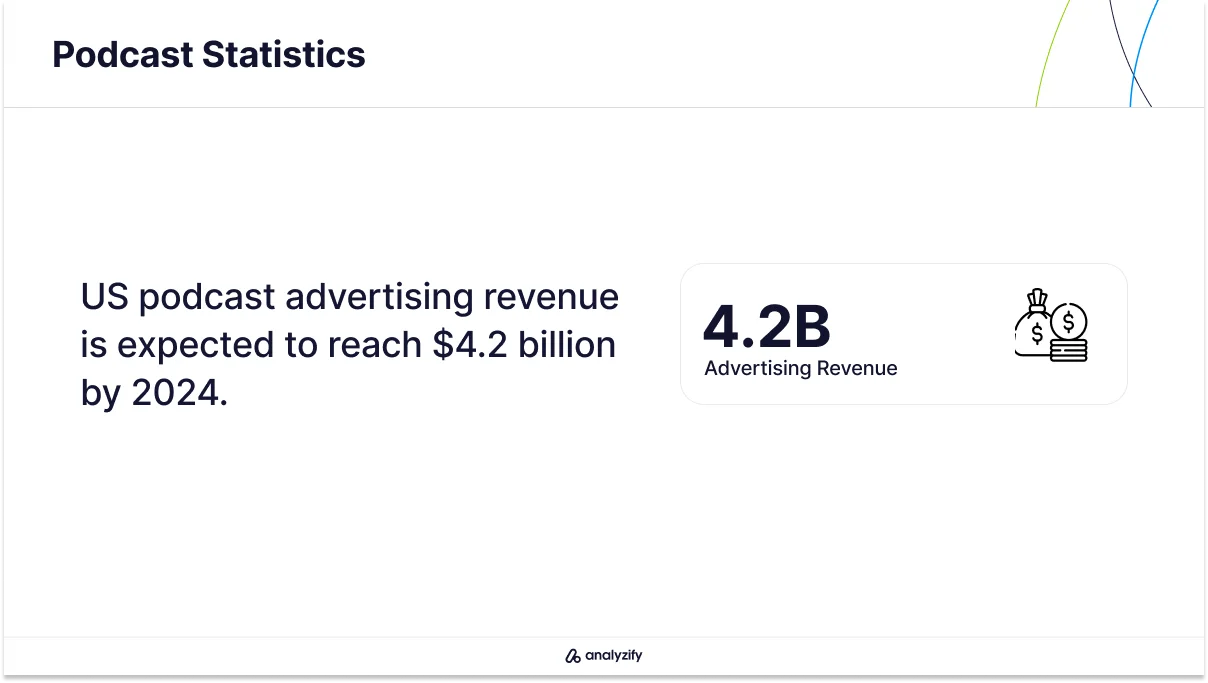
The numbers underline this growth:
- By 2024, podcast advertising revenue in the United States is projected to reach $4.2 billion,
- Around 91% of listeners take action after hearing a podcast ad, such as researching a product, visiting a website, or making a purchase.
- Mobile devices account for 94.1% of podcast consumption, making podcasts highly compatible with ecommerce shopping behaviors.
- Peak ads engagement occurs during weekday listening, with 78% of podcast consumption happening Monday through Friday.
- Podcast audiences are incredibly loyal, with 73% of listeners saying they feel podcasts are a meaningful part of their lives.
Bonus: Before exploring the details, you can check out our guide on Key Spotify Statistics to discover more podcast marketing insights.
Here’s what current market data reveals about podcast marketing performance, revenue potential, and advertising strategies across different platforms:
Podcast Marketing Growth and Market Share
Podcast marketing has proven particularly effective for ecommerce brands, with conversion rates significantly outperforming traditional digital advertising channels.
The data shows clear patterns of engagement and response that explain this success.
Global Podcast Advertising Revenue and Platform Distribution
The podcast market continues to expand: monthly podcast listeners have reached 160 million in the US in 2024, doubling 2020 figures.
The US leads with $1.5 billion in advertising investment, while European markets expect revenue of $232 million by 2023. The DACH region shows particular promise, with 29-35% of the population engaging with podcasts monthly.
Major platforms control distinct portions of podcast market:
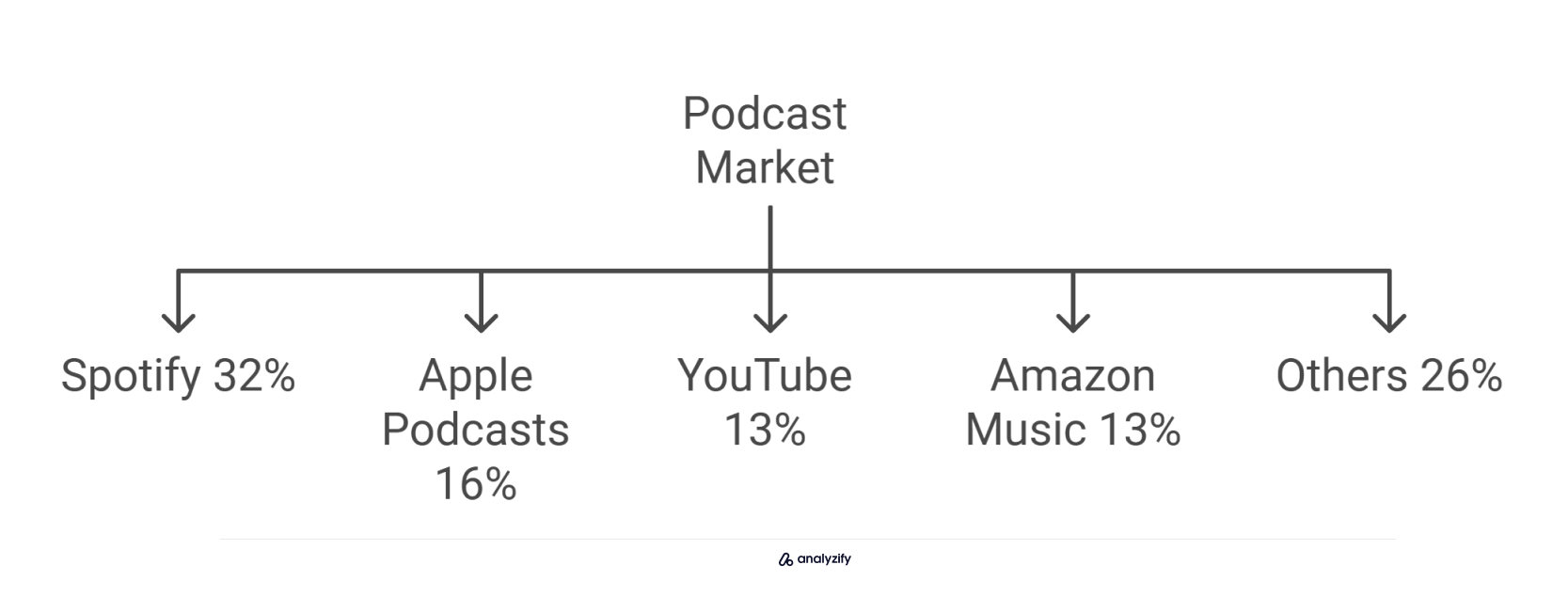
- Spotify dominates with 32% market share
- Apple Podcasts holds 16% of listeners
- YouTube and Amazon Music each capture 13%
- Independent networks and specialized platforms serve the remaining 26%
Bonus: Learn more about the latest podcast marketing statistics for ecommerce in our detailed guide, packed with valuable insights.
Strategic Ad Placement in Podcasts
Timing matters in podcast marketing. Peak listening occurs weekdays at 8 AM and 5 PM, when most listeners tune in during commutes. Advertisers can place ads in three positions:
- Pre-roll: Opening of the episode
- Mid-roll: Natural breaks during content
- Post-roll: End of episode
Research shows pre-roll and mid-roll spots generate 2x stronger engagement than post-roll placements.
Podcast Audience Engagement
Average listening sessions last 55 minutes, with 71% of listeners combining audio with other activities:
- 81% actively pay attention to advertisements
- Peak listening occurs during commute times (8 AM and 5 PM)
- 65% of weekly podcast consumers watch at least three hours of ad-free streaming TV
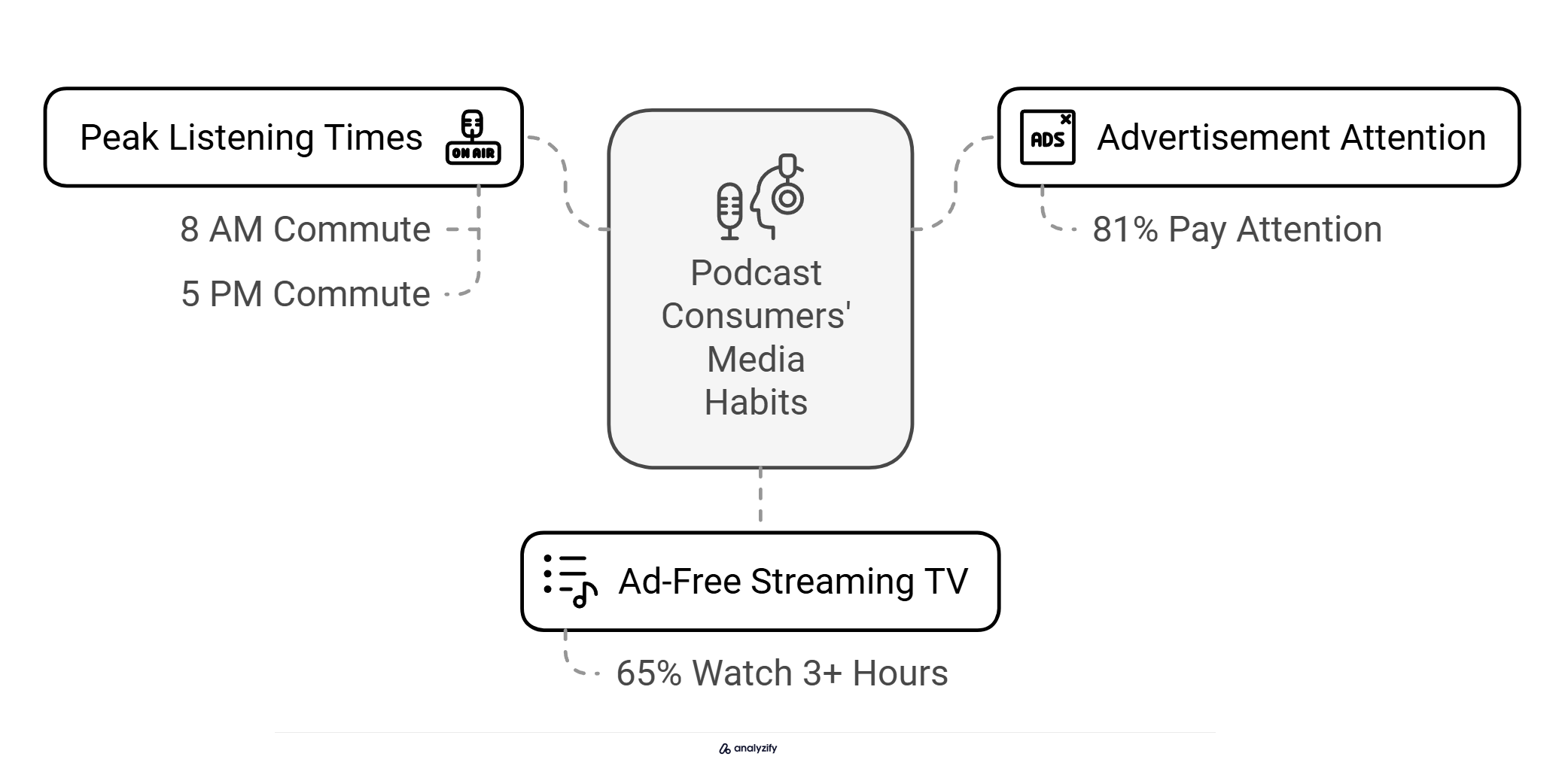
Why Podcast Marketing Works for Ecommerce
Podcast advertising demonstrates strong performance compared to traditional media formats, with a 34% conversion rate versus digital display ads (1.1%) and TV commercials (3.1%).
The revenue structure in podcast advertising breaks down into several key components:
- Brand awareness and mentions represent 61% of total revenue
- Host-read ads lead delivery methods at 55% of total ads
- Announcer-read ads account for 40%
- Dynamic insertion ads make up the remaining 5%
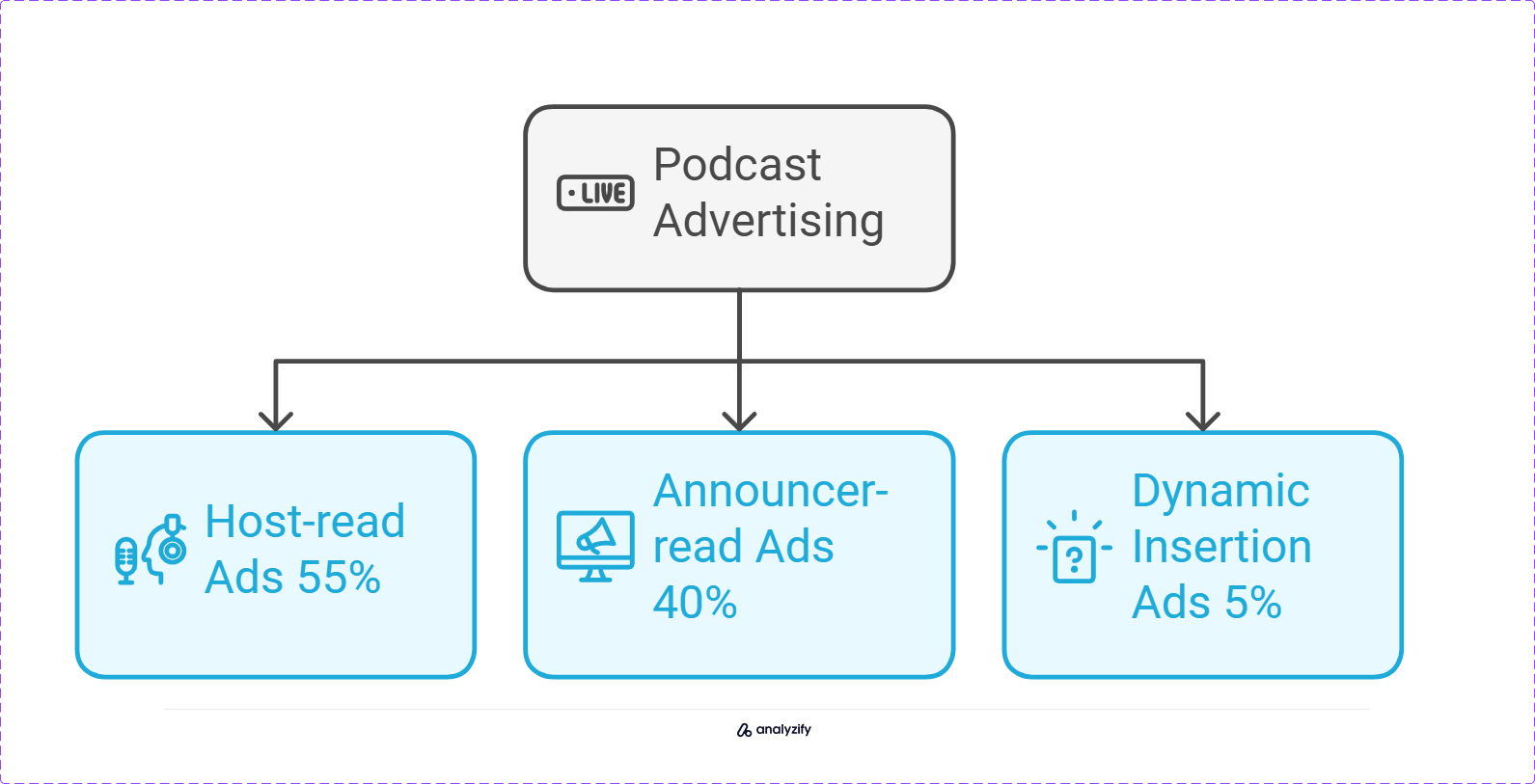
Content category analysis reveals that comedy and sports generate significant advertising revenue, at 17% and 15% respectively.
Local news content stands out with 157% higher engagement compared to other categories, indicating strong audience connection with regional content.
This distribution shows how different content types and delivery methods contribute to podcasting’s advertising effectiveness, with host-driven content performing particularly well.
Trust-Based Marketing Impact
The relationship between hosts and listeners creates unique advertising opportunities. Studies show:
- 69% of listeners develop more positive opinions of brands that support their favorite podcasts
- 52% actively choose to support brands advertised on their preferred shows
- Host recommendations carry more weight than traditional advertising messages
- Personal stories and experiences from hosts increase ad credibility
Audience Quality and Purchasing Power
Podcast audience demographics reveal distinctive characteristics that make them valuable for advertisers. The median age of listeners is 34, significantly younger than radio (47) and TV (57) audiences.
Gen Z shows particularly strong engagement patterns:
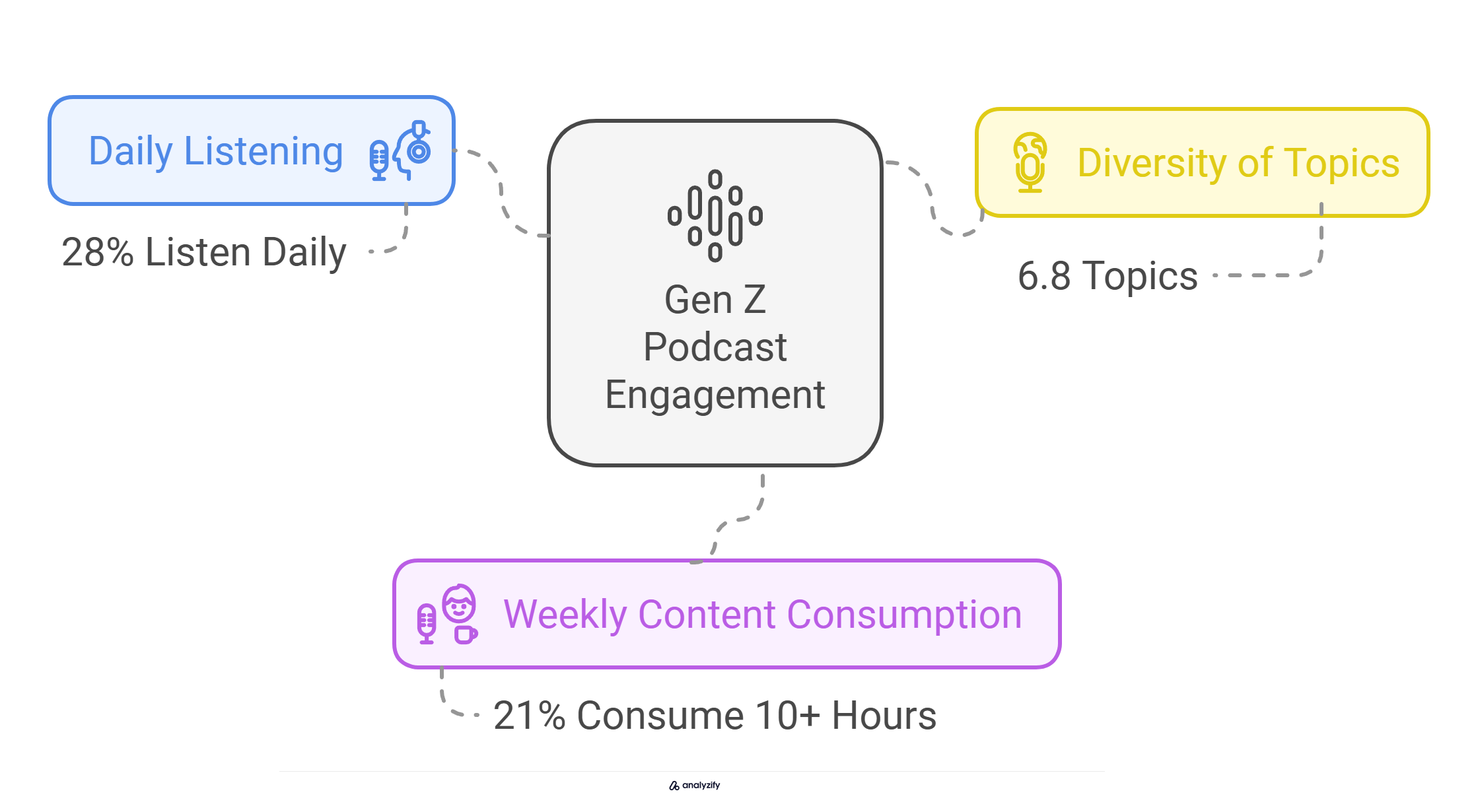
- 28% of Gen Z listen to podcasts daily
- 21% consume more than 10 hours of weekly content
- Gen Z engages with an average of 6.8 different podcast topics
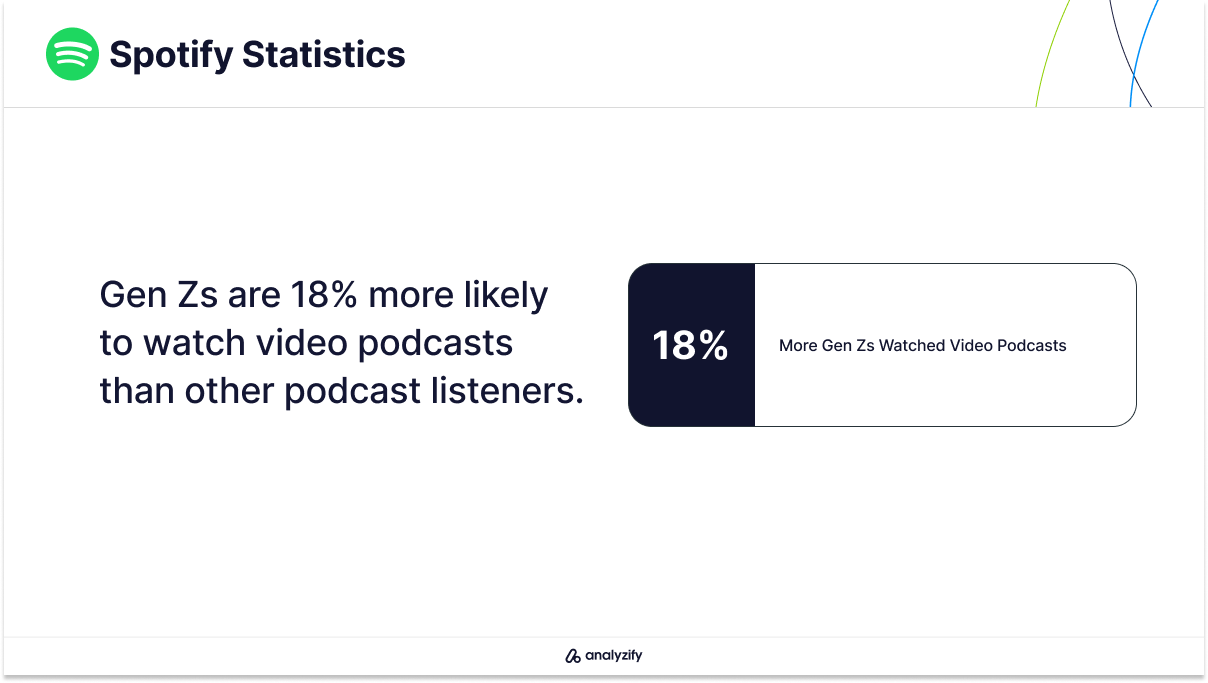
The Spanish-language markets represent one of the fastest-growing segments, showing 75% year-over-year growth in 2020. This growth is particularly notable in Latin America, where titles in Spanish grew 13% in 2018.
Attention and Recall Benefits
Unlike other media formats, podcast ads benefit from:
- 27% higher emotional intensity during ad exposure
- 38% higher memory encoding compared to social video ads
- Reduced ad fatigue due to natural placement
- Higher brand recall rates when host-read
This combination of factors explains why podcast marketing consistently delivers strong results for ecommerce brands. The format allows for authentic promotion while maintaining the trust and engagement that drives conversion.
Types of Podcast Advertising Strategies for Ecommerce
Success in podcast marketing depends on choosing the right advertising format for your goals. Each approach offers distinct advantages for ecommerce brands, with varying levels of integration and audience response.
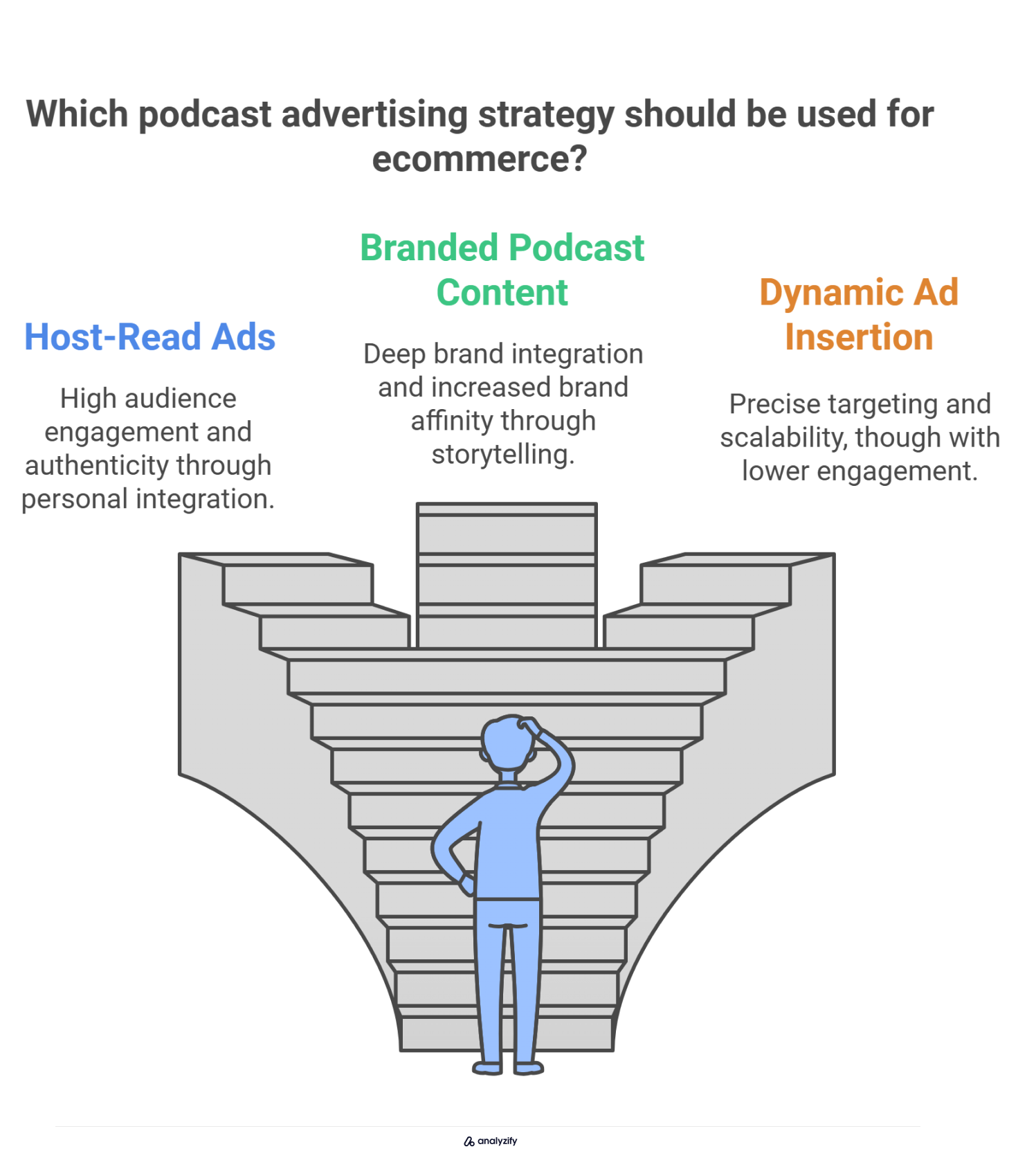
Host-Read Advertisements
Host-read ads lead podcast advertising with 55% market share, outperforming other formats in both audience preference and engagement.
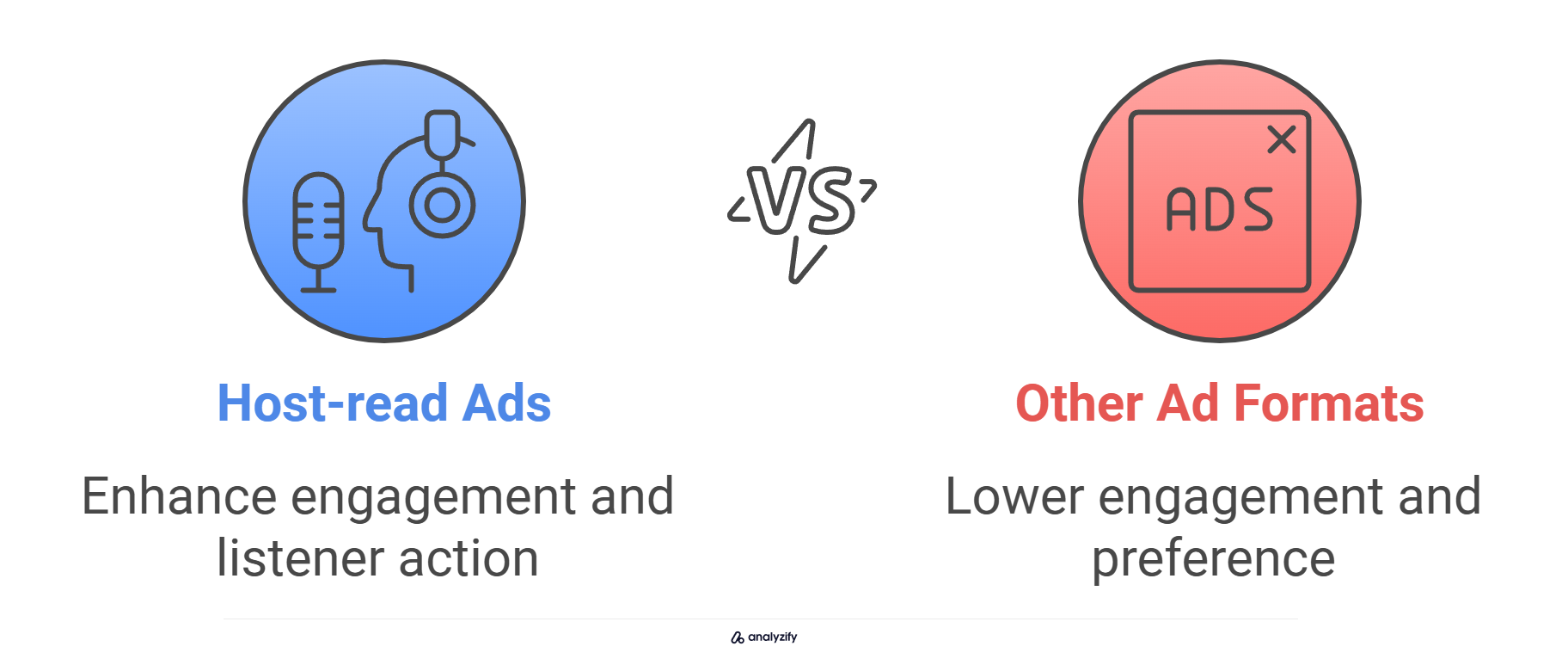
According to industry data, 91% of podcast listeners act after hearing a host-read ad. These ads typically run up to two minutes and include:
- Personal experiences with products
- Natural integration into podcast content
- Authentic testimonials and recommendations
- Custom promotional codes for tracking
The most effective host-read ads occur when the host maintains creative control over the message while incorporating key product details.
Branded Podcast Content
Creating dedicated podcast content offers deeper brand integration. Research shows 86% of branded podcasts result in increased brand affinity, with an average lift of 8 points. This approach includes:
- Complete control over message and presentation
- Extended time for product storytelling
- Direct audience relationship building
- Cross-promotion opportunities
65% of those who listen to a branded podcast say they would listen to another one, while 61% report feeling more favorable toward the brand.
Dynamic Ad Insertion
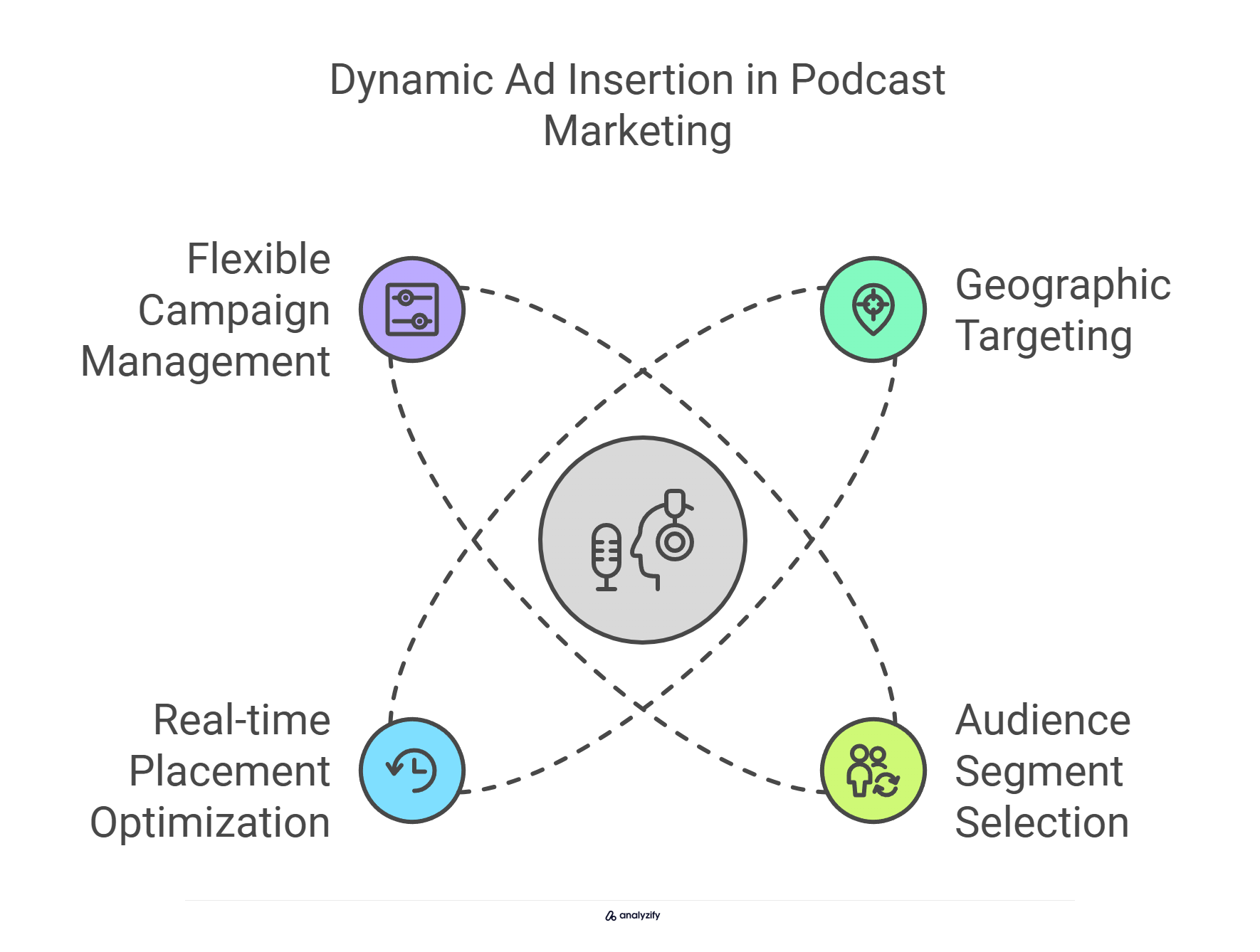
Data shows 94.1% of podcast listening happens via mobile devices, making targeted delivery crucial:
- Geographic targeting
- Audience segment selection
- Real-time placement optimization
- Flexible campaign management
While dynamic insertion offers scale and targeting precision, it typically generates lower engagement than host-read ads due to reduced authenticity.
Sponsorship and Partnership Models
Long-term podcast partnerships create sustained brand presence. Studies indicate 84% of Gen Z monthly podcast listeners consume podcasts with video components, suggesting multimedia partnership opportunities:
- Regular mentions across multiple episodes
- Deep integration with show content
- Host familiarity with products
- Natural, recurring promotion
Research shows 45% of listeners feel more connected to content creators through video elements, making cross-platform promotion valuable.
Best Practices for Podcast Marketing in Ecommerce
Success in podcast marketing requires understanding audience behavior patterns and content preferences. These insights help create more effective advertising strategies.
Strategic Content Selection
Match your brand with podcasts that share your target audience’s interests and values. Research shows that:
- 49% of Gen Z listeners want authentic product experiences from hosts
- 82% of Gen Z monthly podcast listeners take action after hearing advertisements
- Values alignment between host and brand increases listener response by 45%
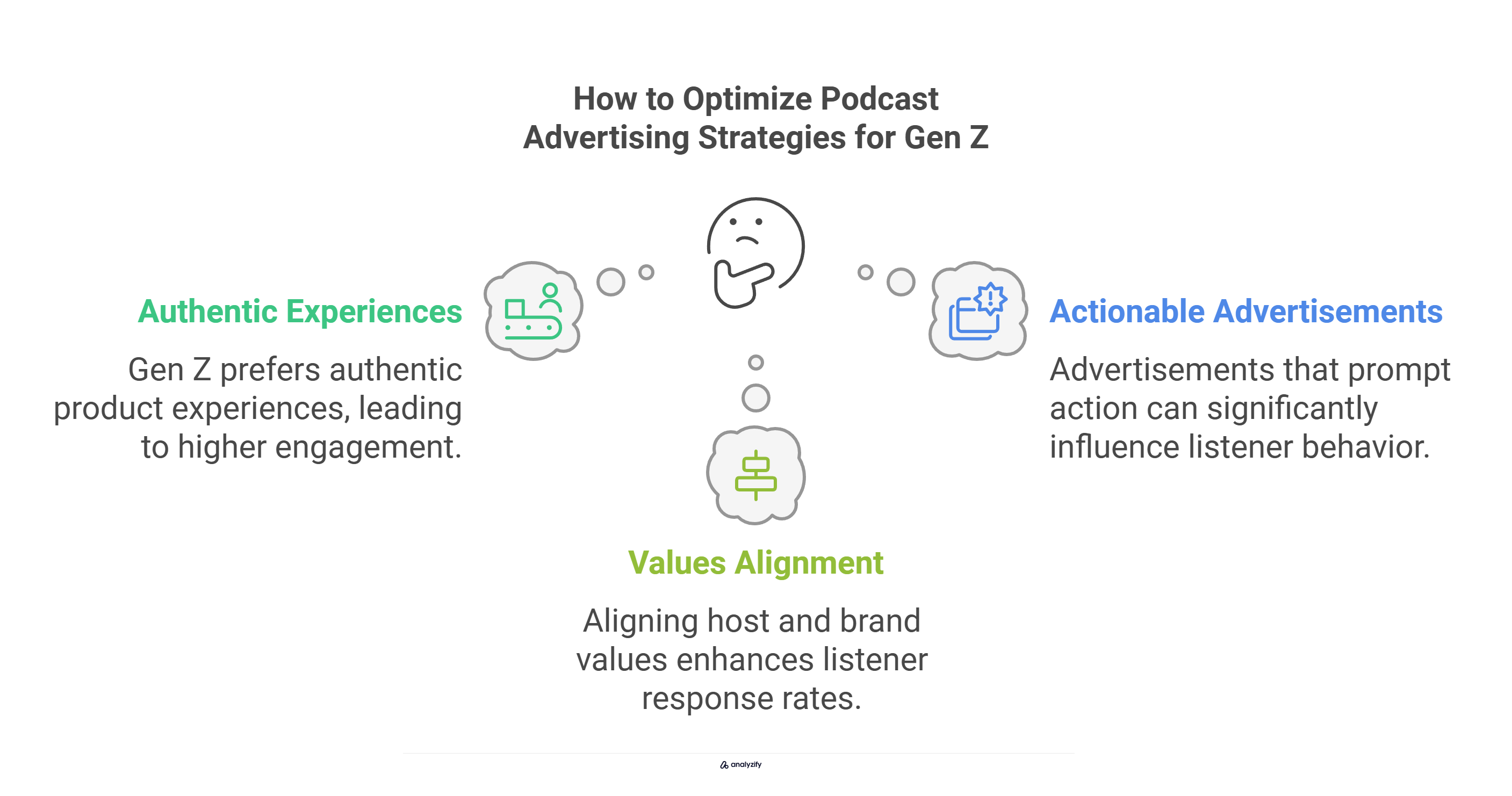
News, comedy, and true crime lead global podcast categories, but niche topics often deliver better targeting for specific products.
Consider that 65% of weekly podcast consumers watch at least three hours of ad-free streaming TV, making them particularly valuable for advertisers seeking hard-to-reach audiences.
Multi-Format Approach
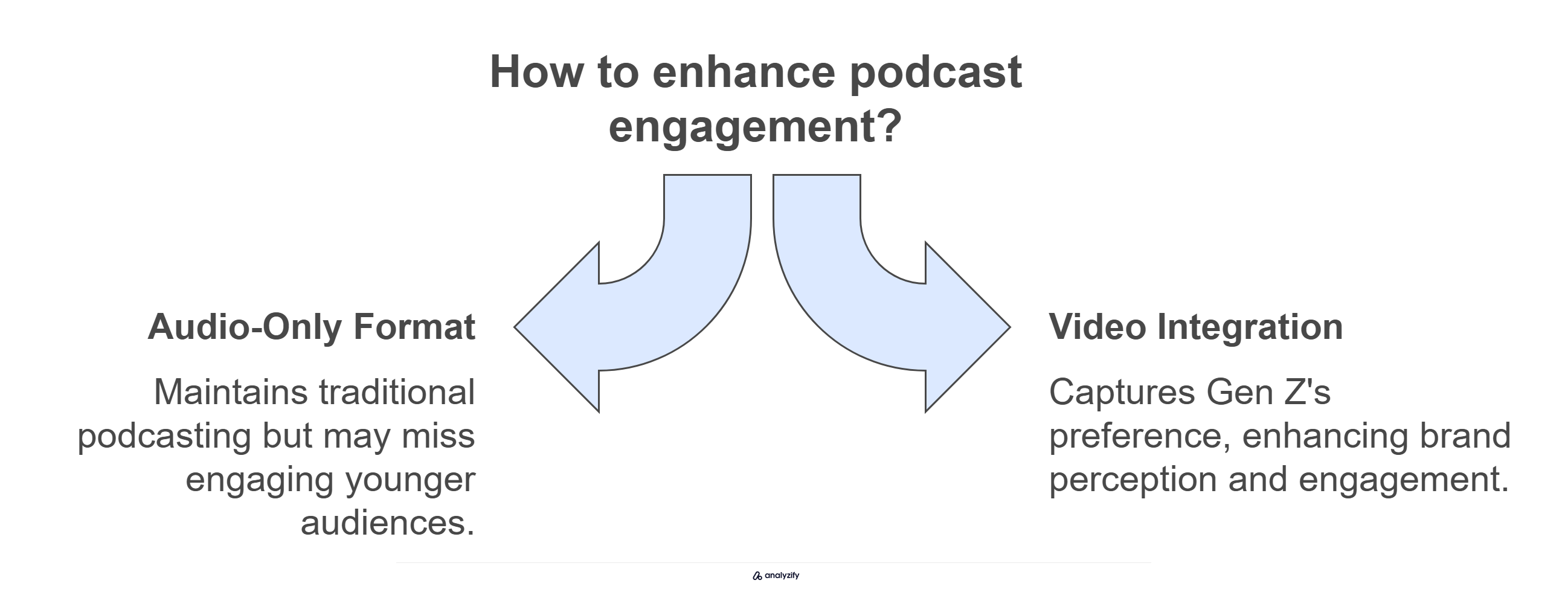
Traditional audio-only podcasts no longer dominate the space. With 84% of Gen Z consuming video podcasts, successful campaigns often integrate visual elements.
NPR’s approach demonstrates this evolution - their video podcast content achieves 75% positive brand perception among viewers.
Weekend consumption patterns differ significantly from weekdays, with listening peaks between 11 AM and noon. This timing affects ad performance and requires adjusted messaging strategies.
Consider that 46% of listeners tune in within 24 hours of release, making timing crucial for time-sensitive offers.
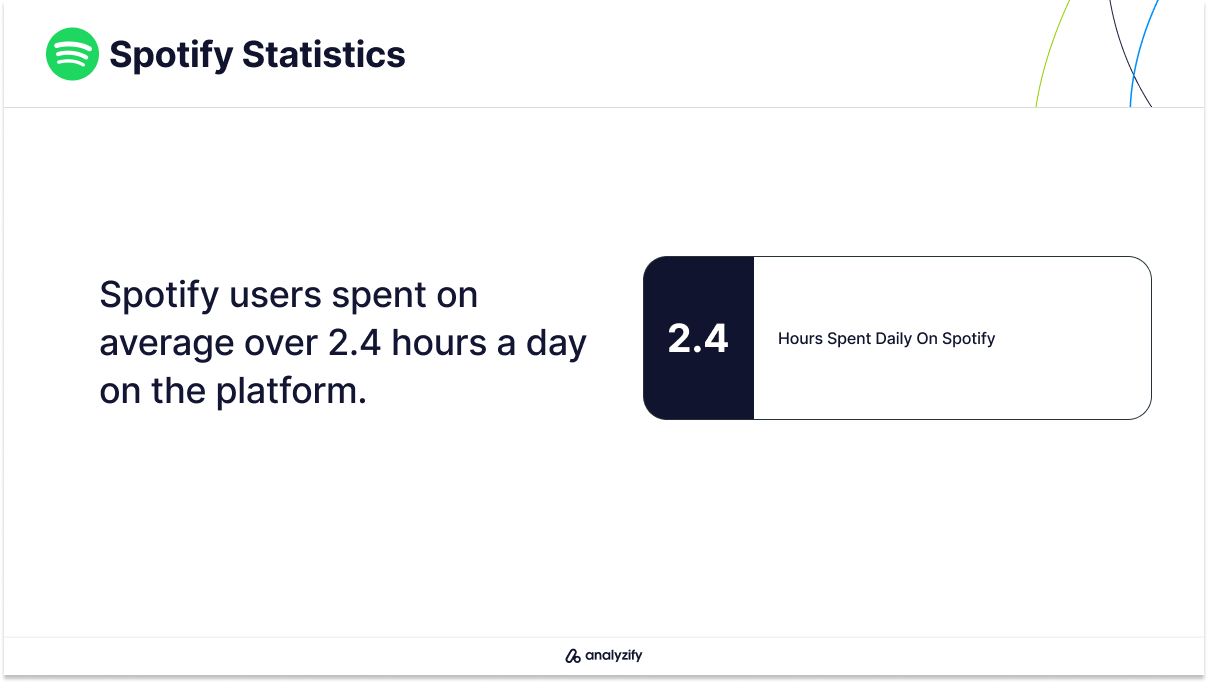
Performance Optimization
Successful ecommerce brands in podcast marketing focus on three key metrics:
- Initial response rates during the first 24 hours post-release
- Cross-platform engagement, particularly when 43% listen while relaxing
- Long-tail performance through episode archives
Case studies from Spotify show that brands achieve optimal results when they maintain consistent presence across multiple episodes rather than one-off placements.
Common Challenges and Solutions in Podcast Advertising
Podcast marketing presents unique challenges for ecommerce brands. Understanding and addressing these challenges helps create more effective campaigns.
Ad Skipping and Attribution
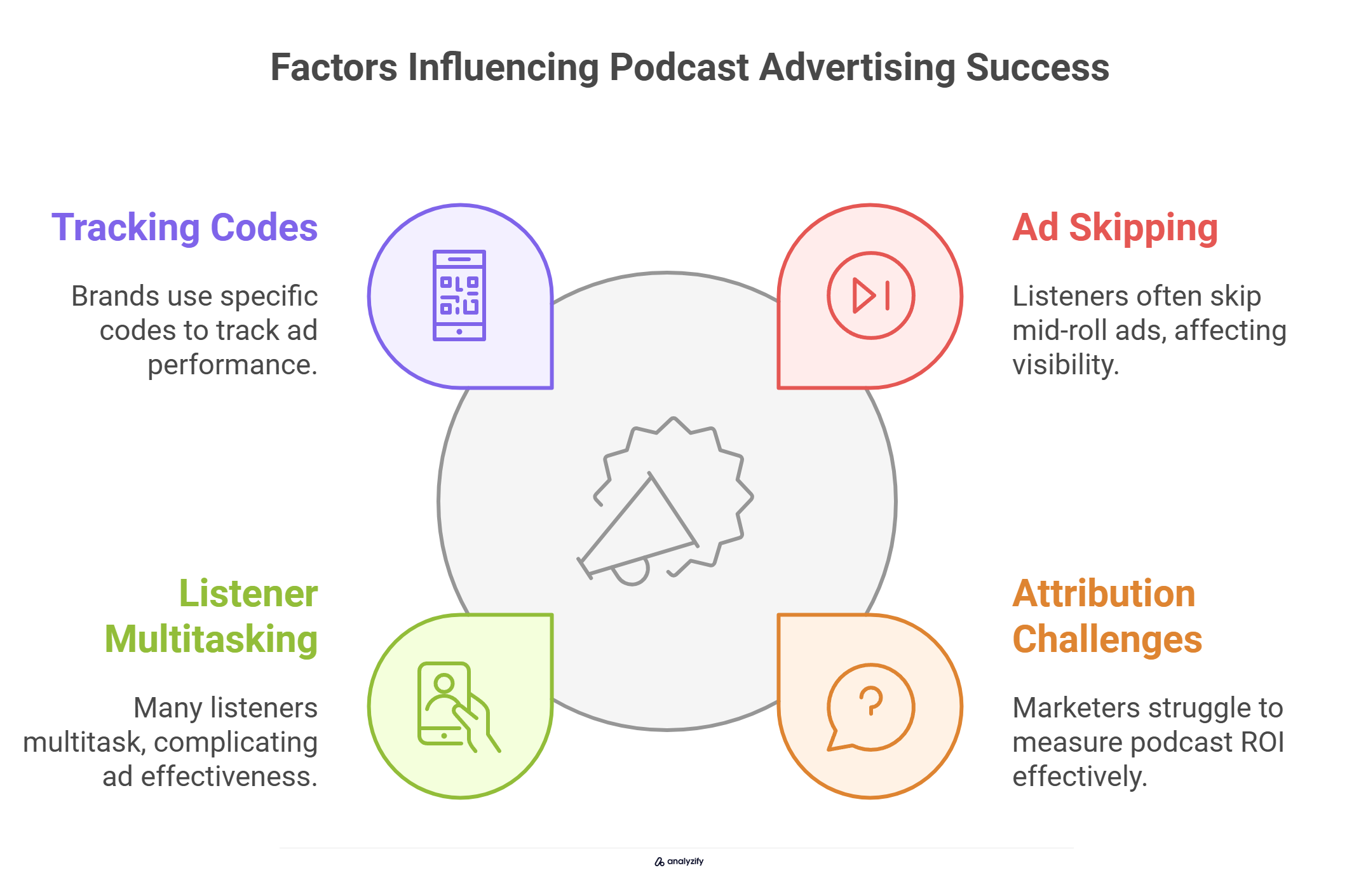
Research shows listeners often skip mid-roll advertisements, while pre-roll ads capture higher attention during peak listening times (8 AM and 5 PM commutes).
NPR’s approach to seamless ad integration achieves 82% engagement rates by positioning ads during natural content breaks.
Attribution remains a significant hurdle - only 49% of marketers feel confident measuring podcast ROI. This challenge intensifies since 71% of listeners multitask during episodes.
Successful brands address this through platform-specific tracking codes, custom landing pages, and post-purchase surveys.
Content Integration and Budget Management
Maintaining authenticity while delivering commercial messages requires balance. Data shows the most effective approach combines host creative control with detailed product information.
Successful campaigns allow hosts to share genuine experiences rather than reading scripts.
Budget optimization across platforms requires strategic allocation. With Spotify commanding 32% market share and Apple Podcasts at 16%, costs vary significantly.
Most successful brands start with smaller shows to test effectiveness before scaling to larger audiences, focusing on audience alignment over show size.
Future Trends in Podcast Marketing for Ecommerce
The podcast advertising industry continues to evolve, with the creator economy projected to reach $480 billion by 2027. This growth shapes how ecommerce brands approach podcast marketing.
Entertainment Takes the Lead
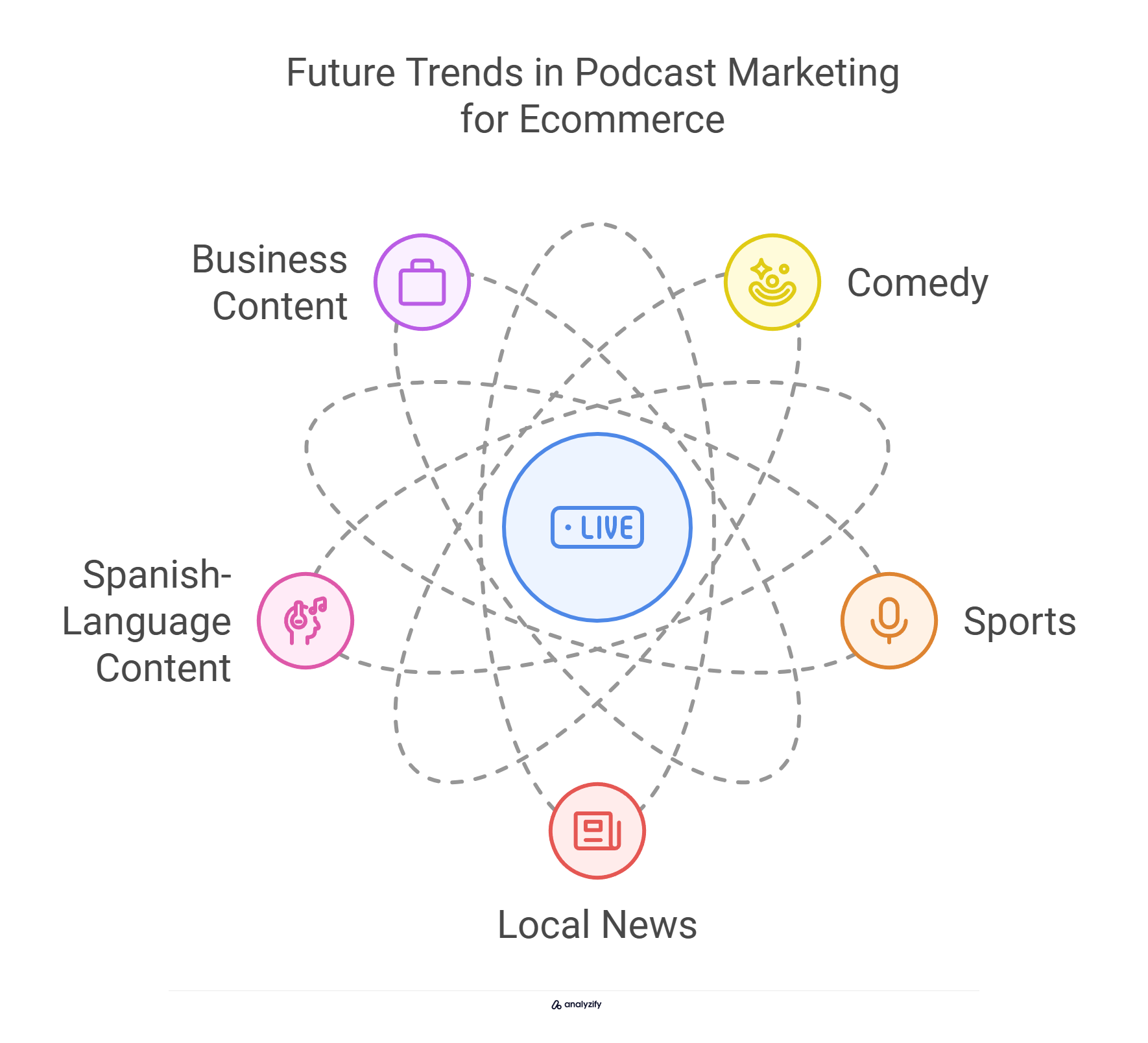
Comedy and sports podcasts now outperform traditional news content in ad revenue, showing where future opportunities lie:
- Comedy generates 17% of ad revenue
- Sports brings in 15% of investment
- Entertainment-focused ads need different approaches than standard promotions
- Casual, authentic messaging performs better than scripted content
Podcast content expands beyond audio alone, creating fresh opportunities:
- Local news content increases ad engagement by 157%
- Comedy listeners respond 147% more often to ads
- Spanish-language content lifts engagement by 116%
- Business content maintains strong performance
Podcast Earnings and Podcast Marketing Insights
Many entrepreneurs wonder about the earning potential in podcasting. Let’s explore the current state of podcast earnings based on extensive industry research.
Average Podcaster Earnings
The earning potential for podcasters varies significantly based on experience level and audience reach:
- Beginner podcasters: $0-$10,000 annually
- Intermediate podcasters: $10,000-$50,000 annually
- Top-level experts: Up to $30 million annually/
For the average podcaster, monthly earnings typically range from $50 to $1,000, primarily depending on download numbers and monetization strategies. Here’s what podcasters can expect based on their download numbers:
Monthly earnings can vary significantly depending on monetization strategies. Here’s what different platforms report for download-based earnings:
Buzzsprout reports conservative figures based primarily on ad revenue:
- 1,000 downloads: Less than $100/month
- 5,000 downloads: Around $1,000/month
- 10,000 downloads: Around $1,000/month
However, podcasters who diversify their revenue streams through Patreon, course sales, and other monetization methods can earn significantly more. Castos reports higher potential earnings:
- 1,000 downloads: Around $745/month
- 5,000 downloads: About $4,925/month
- 10,000 downloads: Up to $13,450/month
These variations in reported earnings highlight how crucial it is to develop multiple revenue streams rather than relying solely on download-based advertising income.
Top Earners in Podcasting
Joe Rogan leads the industry as the highest-paid podcaster, with his earnings breaking down as follows:
- Annual income: $30 million
- Per episode: Approximately $800,000
- Monthly earnings: $9.6 million
- Notable deal: $200 million Spotify exclusive streaming rights
Other top earners include:
- Karen Kilgariff & Georgia Hardstark: $15 million annually
- Dax Shepard: $9 million annually
- Bill Simmons: $7 million annually
- Chapo Trap Network: $2 million annually
- Tim Dillon: $1.3 million annually
Guest Compensation Insights
Most podcasts focus on monetization through various revenue streams including:
- Sponsorships and advertising
- Affiliate marketing
- Memberships and subscriptions
- Donations and crowdfunding
- Live coaching opportunities
- Merchandise sales
- Public speaking engagements
- Consulting services
Guest compensation practices vary widely across different podcasts, with arrangements typically depending on factors like podcast size, budget, and mutual promotional value.
Podcast Profitability and Operating Costs
The podcasting landscape continues to offer viable revenue opportunities, with the industry valued at $23.56 billion in 2024. However, understanding the cost structure is crucial for success.
Small Podcast Earnings
Small podcasters typically generate modest income in their early stages:
- With 1,000 downloads per episode: Up to $15 per episode from affiliate sales
- Monthly earnings: $50-$100 for newer shows
- Podcasts with 10,000 downloads can expect $500-$900 monthly
Podcast Production and Publishing Costs
Beginning podcasters should focus on essential equipment and affordable hosting solutions. While the initial investment can be modest, successful podcasters emphasize the importance of investing in quality equipment for professional-grade content.
The essential investments for a successful podcast include:
- High-quality recording equipment
- Professional editing software
- Reliable hosting platform
- Marketing and promotion tools
Part-time podcasters working for non-audio focused companies often start with minimal investment, though their earnings tend to be about half of what freelancers make.
This difference in earnings highlights the importance of strategic investment in both equipment and marketing to maximize revenue potential.
Revenue Potential for Different Types of Podcast Shows
Employment status significantly impacts earning potential in podcasting. The median hourly rates across different employment types show clear patterns:

- Freelance podcasters: $40-44/hour
- Full-time audio-focused company employees: $35-39/hour
- Part-time audio-focused company workers: $30-34/hour
- Independent/no income shows: $30-34/hour
These rates reflect the trade-off between job security and earning potential, as freelancers often sacrifice stability for higher hourly rates.
Factors Affecting Profitability
A podcast’s financial success depends on multiple factors working together. Geographic location plays a crucial role, with New York and Los Angeles offering the highest rates in the industry.
Several key elements influence a show’s profitability:
- Content genre: Business podcasts tend to command higher rates
- Production quality and format choices
- Diversity of monetization strategies
- Level of audience engagement and growth
- Consistency of content delivery
The most successful shows typically employ multiple revenue streams, from sponsorships to merchandise sales. Building and maintaining an engaged audience requires consistent effort and high-quality content, but these elements form the foundation of a profitable podcast.
While not every show becomes highly profitable, those that focus on building engaged audiences while maintaining diverse revenue streams have the best chance of financial success.
FAQ About Podcast Marketing for Ecommerce and Monetization
Here are the key questions podcast creators frequently ask about monetization, marketing strategies, and startup costs in the podcasting industry:
How many listeners does a podcast need to be profitable?
A podcast with 1,000 downloads per episode can earn up to $15 from affiliate sales, while those reaching 10,000 downloads can generate $500-$900 monthly. For maximum profitability, aim for multiple revenue streams rather than relying solely on listener numbers.
Who is the highest-paid podcaster?
Joe Rogan tops the industry with $30 million annual earnings and an exclusive Spotify deal worth $200 million. He earns approximately $800,000 per episode, releasing three episodes weekly.
Is podcasting still profitable in 2024?
Yes. The podcasting industry is valued at $23.56 billion in 2024, with earnings varying from $10,000-$50,000 annually for intermediate podcasters to millions for top performers.
Geographic location significantly impacts rates, with New York and Los Angeles offering the highest compensation.
How do podcasters get paid?
Successful podcasts generate income through multiple channels: sponsorships, affiliate marketing, memberships, merchandise sales, live coaching, and consulting services.
Freelance podcasters earn median rates of $40-44/hour, while full-time employees at audio companies earn $35-39/hour.
How much does it cost to start a podcast?
Initial costs focus on essential equipment (microphone, editing software) and a hosting platform subscription. Part-time podcasters often start with minimal investment, while professional setups require higher-quality equipment.
Business podcasts typically command higher rates, making the initial investment more quickly recoverable in this niche.

































